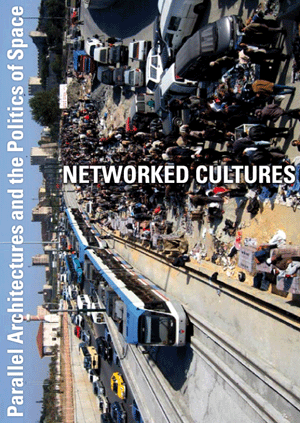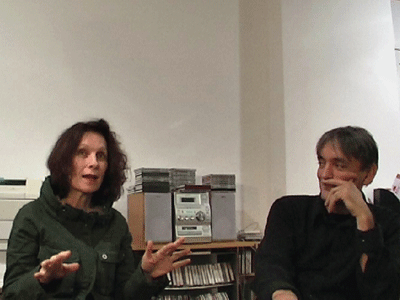_loginregistrieren_database_5 Factories - Worker Control in Venezuela Dario Azzellini & Oliver Ressler _ALMOSTREAL ECF _AnArchitektur Jesko Fezer _Arizona Road Azra Aksamija _Balkan Konsulat rotor _Bata-ville: We are not afraid of the future Nina Pope + Karen Guthrie / www.somewhere.org.uk _Black Benz Race krcf in collaboration with Felix Stalder, Arben Gecaj, Faton Topalli and Osman Osmani _Black Sea Files Ursula Biemann _Camp La Jolla Military ParkOwen Mundy _CHANGE REALITY: Renaming the Streets of Zagreb REINIGUNGSGESELLSCHAFT _Conceptual Paradise. There is a place for sophistication Stefan Roemer _de-regulation Irit Rogoff, Kutlug Ataman, Stefan Roemer_news ____________Bloomberg SPACE, London ____________Kumu Art Museum Tallinn ____________Open Space, Open Systems - Vienna ____________CAA 2011 Conference, New York ____________Forum Stadtpark, Graz ____________Symposium, Istanbul ____________lungomare, Bozen/Bolzano ____________Metropolis Biennale 2007-17, Copenhagen ____________new publication available now ____________Mestna Galerija, Ljubljana ____________Livestream of Networked Cultures documentary ____________ |
_ConversationsCampement Urbain
Campement Urbain
PM/HM: After years of negotiations you’re now in the process of realising a communal “place of solitude” in Sevran on the outskirts of Paris. How does this protracted process relate to current urgencies of urban peripheries? François Daune: It started with a competition, organised by the “Evens Foundation”, an originally private Belgian foundation. The subject was “Art, Community and Collaboration”. We were asked to submit a proposal, but we replied with a “dispositif”, a kind of set-up or device that suggests new ways of collaborating between art and citizens. We wanted to initiate something, the beginning of a story, an urban fiction. I’m an architect and at that time I was already working in an area of the city of Sevran. I thought it would be an interesting place to implement our project, Je&Nous. The town is located close to Charles de Gaulle International Airport, from where millions of passengers travel to the centre of Paris everyday on the RER train. And then you have thousands of inhabitants in Sevran’s multicultural district, called Les Beaudottes, who’ve come from foreign countries all over the world. These two groups never meet unless some guys stop the train and rob things from passengers. Les Beaudottes station is renowned for such attacks. In contrast to the travellers who are constantly on the move, the people of Les Beaudottes are stranded there, trapped and – from the moment of their arrival – deprived of work and social status. Moreover, they’ve lost their mobility. The two groups live separately in two distinct worlds that form new territories of modernity. The question for us was how to work with a community and use art as a means to promote collaboration between antagonistic communities. Living in Sevran-Beaudottes is economically difficult, but also and in particular because the French aren’t welcoming towards immigrants, who are deprived of basic rights such as the right to vote and citizenship. Many of them retreat into new forms of communitarism and/or patriarchal systems based on male authority. In this sense it was very interesting for us to try to initiate a project based on an exchange between “alien” populations – a project that would address the question of community without archaic authority and “make society” (faire société). Our way of dealing with this enormous challenge involved a quite modest suggestion: we asked inhabitants not just to participate but also to “share responsibilities”. We proposed creating an object where an individual could be alone but that would be everyone’s responsibility at the same time. All the communities would take care of the object while allowing people to get away from their respective communities. In other words, people entering the object exit their communities. This means their communities have to accept that they’re taking (an individual) time out when they go away and stay there. It’s a place that might be able to trigger new practices. Though, since the project is the responsibility of the community, it exists only as long as people agree to keep the physical object intact. They have to discuss how to do this, how to use it, maintain it and so on. If discussion stops, the object will disappear. So discussing the meaning of such a space actually constitutes its beginning. Of course, there’s also the question of how to convince people in the area to collaborate. So in simple terms, this was the project we submitted to the foundation – and we won the competition. Sylvie Blocher: Sevran is a symbolic place. A new city, created in the 1970s for immigrants. Its first residents came from North Africa, from the Maghreb. Subsequently, Asian and then Indian communities arrived. Most of them were Muslims. It was a very dense area and there were fights between the different communities. Before we submitted our proposal for the competition, we went to see the mayor to talk about the project. And this chap, the youngest (29!) mayor ever elected in France, said: “Nothing’s working here, so every new idea is OK with me. The city doesn’t have any money to offer, but I’ll support you.” Well, we’d won the competition, but at first this was more of a nightmare because although it had been a nice, very utopian project to imagine, it wasn’t going to be easy to put into practice. Our idea was to conceive a place that wouldn’t be affiliated with any religion or ideology. Simply a place for – desired rather than imposed – solitude, where people would be able to escape for a little while from their own communities. And especially for Muslim women who have no other place to go but their homes. PM/HM: Is there a connection between how the project works as a process and how you work within the Campement Urbain collective? Sylvie Blocher: Well, for us the process of discussing the project with people was definitely more important than the actual production of an object. It was much more about the process and how we could work on it, because for us the process of how these people conceive themselves and become visible as subjects within the debate is essential. It’s what we call “a process of infiltration”, which means infiltrating reality with art in order to upset its rules and conventions and so make room for the subject. For instance, we prefer talking things out and we don’t vote. A suggestion has to be persuasive enough to convince the group. It’s a long procedure – what we call in French du temps dilapidé – and the basis of democracy. It’s also a process that has no intention to exclude. And it’s the same one still used today by the Campement Urbain group. It took us eight months to get access to the area. Normally, people from outside don’t go there. So we asked a sociologist to join the group. She started to go regularly into the area, to see what people were doing, what kind of associations existed and to understand all the unspoken laws. She sat for hours on a bench and in the beginning she was hassled, but after a while she became part of the landscape and started to converse with people. After eight months we organised our first meeting, but it was a disaster because the day we had chosen turned out to be the beginning of Ramadan – we’d thought it was the next day. So when we held the second meeting, we really thought nobody would come, but it was full. Everyone was there and so we began to explain what we envisioned, i.e. to create a place of solitude together! We were actually quite worried as people from all the different communities were there. But then a woman looked at us and said, “What you’re proposing would be the ‘greatest luxury’, because our apartments are so overcrowded, and the city so dense here.” Everyone was very firm and direct and said, “OK, we understand, we like what you’re suggesting, but who will make all the decisions?” Then a woman said, “If we go there and it’s not a mosque, a church or a temple, it’ll have to be tremendously beautiful.” One man asked: “Who will have the key to the place?” These two questions showed us that people understood the challenge of the project perfectly and the power issues it would involve. We explained that we wanted to create a new public space with them. Over a period of three years we’ve been there almost every week, together we’ve worked out what the object should look like and where it should be located in Les Beaudottes. We’ve also tried to work on our international image, for example, in 2003 curator Hou Hanru invited us to the Venice Biennial to participate in “Zone of Urgency”. With money donated by visitors to the Biennial, we were able to go there with some inhabitants of Les Beaudottes. We’ve presented the project at many international events. And as an artist, I’ve produced a video with 100 residents. We’ve also filmed the meetings in Sevran. To us, it seemed necessary to receive recognition internationally so as to force municipal, regional and state offices to consider “sharing the responsibility”. Meanwhile, Campement Urbain has given the object a definite design based on the demands of the inhabitants. It will be a little public garden with a small structure floating within it and perhaps a keeper to maintain solitude. Meanwhile the city has provided land. We’ve obtained permission to build. Though we still lack money and it isn’t done yet. When we began, we’d no idea it would take so long … It has been a project full of happiness and pain.
|
_broadcasts_conversations+ Ana Dzokic and Marc Neelen+ Ayreen Anastas and Rene Gabri + atelier d'architecture autogérée (aaa) + Asya Filippova + Sophie Hope and Sarah Carrington + Branca Curcic + Christoph Schaefer + Campement Urbain + Claudia Zanfi + Despoina Sevasti and Poka-Yio + Erden Kosova + Helmut Batista _textsRadio as Spatial Practiceby: Paulo Tavares Survival Kits: Artistic Responses to Globalizationby: Marga van Mechelen What Ever Happened to Cultural Democracy?by: Sophie Hope I don't know how to explain ...by: Anca Gyemant Trading Placesby: Peter Moertenboeck & Helge Mooshammer Milosevic as Architectby: Srdjan Jovanovic Weiss When the Unavoidable Knocks at the Door ...by: Gulsen Bal Tracing Translocality: The BlackBenz Raceby: Felix Stalder travelling lexicon towards a global positioning systemby: Celine Condorelli |
